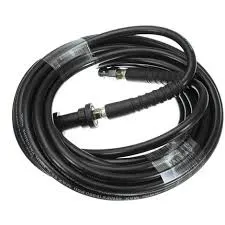honda power steering hose replacement
Honda Power Steering Hose Replacement A Comprehensive Guide
Power steering is a crucial component of modern vehicles, providing drivers with the ability to steer with ease. In Honda vehicles, like any other, the power steering system relies on a network of hoses to transfer hydraulic fluid. Over time, these hoses can wear out, crack, or leak, leading to steering difficulties and potentially expensive repairs. If you suspect that your Honda’s power steering hose needs replacement, this guide will walk you through the process.
Understanding the Power Steering System
Before delving into the replacement process, it's essential to understand the role of the power steering hose. The system consists of various components, including the power steering pump, reservoir, and the hoses themselves. The power steering hose is responsible for carrying the hydraulic fluid from the pump to the steering gear. If the hose becomes damaged or develops leaks, the fluid can escape, resulting in diminished steering performance and increased strain on the power steering pump.
Signs of a Failing Power Steering Hose
Common signs that your Honda power steering hose may need replacement include
1. Leaking Fluid If you notice yellow or clear fluid under your vehicle, this is often power steering fluid. Leaks should be addressed immediately to prevent further damage.
2. Steering Difficulties If you find it increasingly difficult to turn your steering wheel, this can indicate low fluid levels resulting from a damaged hose.
3. Unusual Noises If you hear whining or groaning noises when turning the wheel, it may indicate that air is in the system due to leaks.
Tools and Materials Needed
To replace a power steering hose, gather the following tools and materials
honda power steering hose replacement

- New power steering hose (specific to your Honda model) - Power steering fluid - Socket set - Wrenches - Pliers - Safety goggles - Rags for cleanup
Step-by-Step Replacement Process
1. Safety First Ensure the engine is off and cool. Disconnect the negative battery cable to avoid any electrical issues during the replacement.
2. Locate the Hose Open the hood and locate the power steering pump and the hose connections. Refer to your vehicle’s manual if you have trouble finding them.
3. Remove Old Hose Use wrenches to carefully loosen and remove the bolts securing the old hose. Be prepared for some fluid spillage; have rags handy to wipe up the mess.
4. Install New Hose Take your new power steering hose and connect it securely, ensuring that all fittings are tight to prevent any future leaks.
5. Refill Power Steering Fluid After installing the new hose, refill the power steering fluid reservoir to the recommended level.
6. Check for Leaks Reconnect the battery and start the engine. Turn the steering wheel from lock to lock a few times to circulate the fluid and check for leaks around the new hose.
7. Test Drive Take your Honda for a short test drive to ensure the steering system operates smoothly.
Conclusion
Replacing a Honda power steering hose is a manageable task for those with basic mechanical skills. By recognizing the signs of failure early and addressing them promptly, you can maintain the integrity of your vehicle’s power steering system. Regular maintenance and inspections will help ensure that your Honda continues to provide a comfortable and safe driving experience.
-
Ultimate Spiral Protection for Hoses & CablesNewsJun.26,2025
-
The Ultimate Quick-Connect Solutions for Every NeedNewsJun.26,2025
-
SAE J1401 Brake Hose: Reliable Choice for Safe BrakingNewsJun.26,2025
-
Reliable J2064 A/C Hoses for Real-World Cooling NeedsNewsJun.26,2025
-
Heavy-Duty Sewer Jetting Hoses Built to LastNewsJun.26,2025
-
Fix Power Steering Tube Leaks Fast – Durable & Affordable SolutionNewsJun.26,2025

